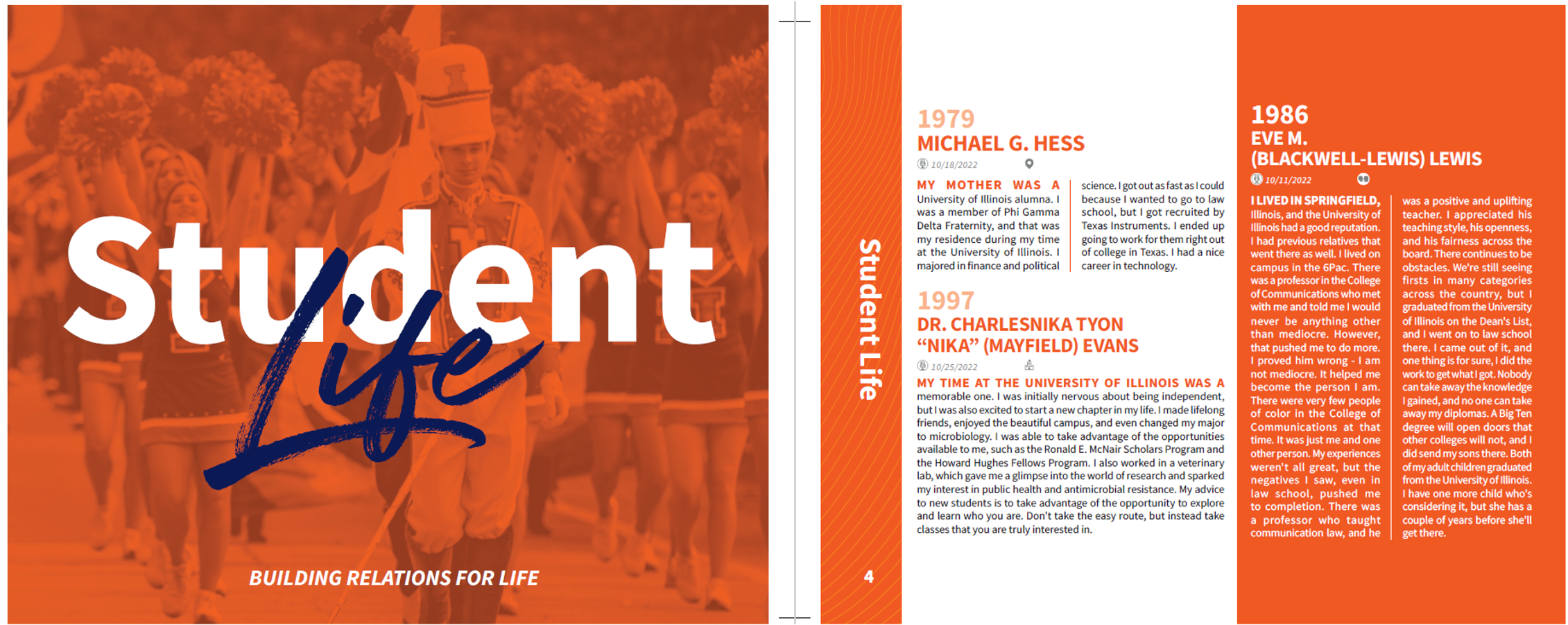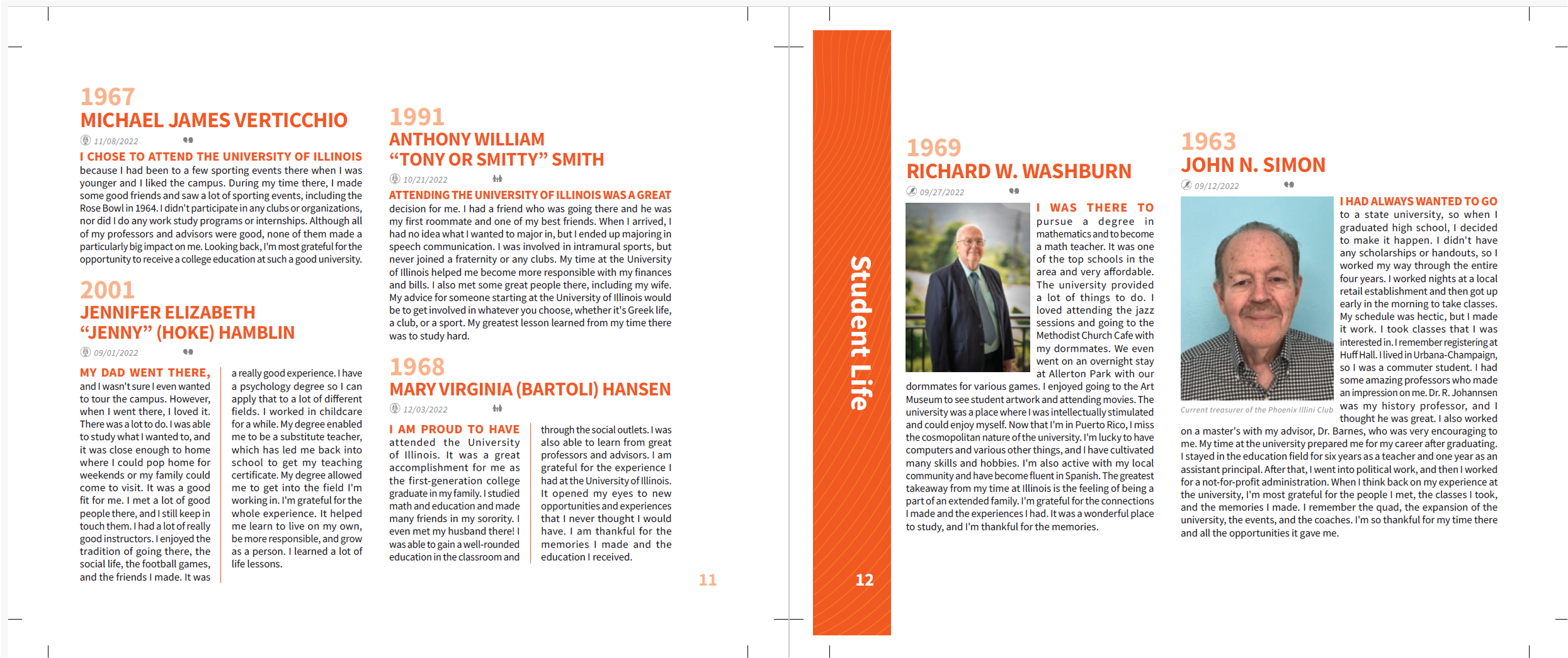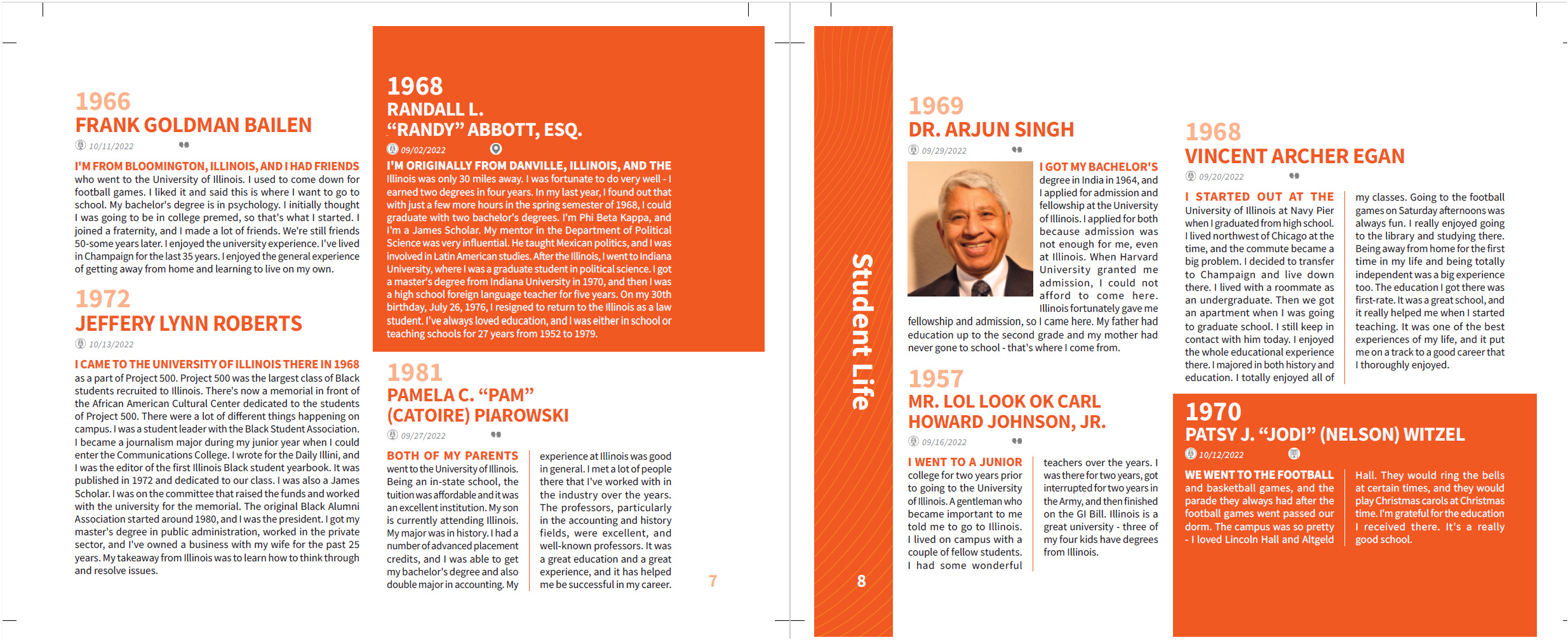This publisher reduced production time for print books from seven weeks to just 4 hours with Typefi automated publishing software and reduced overall cost by minimising the amount of paper used per book.
Publishing Concepts, Inc. (PCI) is in the business of telling stories. The company is over 100 years old and based in Dallas, Texas, USA. Its latest product is a publication called the Oral History Project.
For the Oral History Project, PCI works with organisations including private high schools, colleges, universities, clubs, and military branches to capture stories from their members and alumni. PCI then compiles them and distributes them as print books and digital versions. The books are also sent to the Library of Congress.
It’s essentially a fundraising tool—there’s no cost to the organisation and funds are raised through sales of the books, digital versions, and merchandise. To date, PCI has collected more than 2.2 million stories and helped its partners raise more than $70 million.
PCI uses Typefi to automatically lay out all the stories and images in Adobe InDesign for each Oral History Project. The layouts are generally simple, but ensuring that everything fits together perfectly is a complex process.
PCI devised a method to maximise space on each page and print each book as short as possible. The method uses Typefi along with some proprietary logic to analyse every story and create the most efficient yet still beautifully-designed book layouts.
It’s one of the most interesting Typefi use cases we’ve seen to date.

The challenge: Faster composition for complex publications
In the early days of the Oral History Project, every book was composed manually. With so much content of varying lengths, it was a tedious process.
“The first book we did manually took four designers six weeks to create. It took us another week to manually create the index,” said Don Moody, VP of Production at PCI.
With about seven weeks to compose a typical Oral History Project, the backlog at PCI began to grow. The team began searching for a solution to speed up the publishing process.
The solution: A three-part automated publishing workflow
PCI was already using XML to store all its data. Every story existed as its own XML file, which made the transition to Typefi much easier.
PCI worked with Typefi to develop a three-part process that leverages Typefi’s intelligent publishing automation along with some complex proprietary logic to create the shortest possible book.
The first step in the process is called the analysis workflow. In this step, PCI uses Typefi to run every story and associated images through the InDesign template for the final publication. The point of this is to determine every possible size that each story could be.
This process uses the same template as the final book, so font sizes, column depths, and margins are taken into account. At the end, a script runs which measures each story. Anything too large is eliminated and PCI is left with a list of possible story sizes that will fit in the final design.
The manifest process
PCI developed the next part of the process themselves. They created a tool to analyse all the measurements from the analysis workflow and determine how to put the pieces together to make the shortest possible book.
The tool goes through thousands of variations until it figures out the perfect combination of stories and images that maximises use of space. There are some complex maths behind this, and it took PCI nearly a year to figure it out.
The result is what PCI calls the manifest—a list of every page of the book and where each story will go in the layout. That way, when the final job is run through Typefi, everything fits perfectly and no space is wasted.
No two projects are ever the same for PCI. The length of the stories (and by extension, the books) is completely variable. The manifest process ensures that every project, no matter the length or number of stories, results in the most efficient book layout.

Automated composition with Typefi
After all this setup work is done, PCI runs the manifest and the content through Typefi to produce the final print-ready book file. Typefi also automates the creation of indexes for every Oral History Project.
Typefi even made it possible for PCI to add a second index to these books without extra effort. For example, in a book for a university, PCI can easily create an index by first and last name plus another index by class year.
It takes just 2 hours for PCI to complete this entire three-part workflow from start to finish, including the index. Plus, with Typefi, PCI has enough capacity to run up to five books simultaneously!
The final part of the process, known as “clean up,” still involves a bit of manual work, but it’s only 2 hours—nothing compared to the old publishing workflow. At this stage, designers manually insert design elements and quotes where white space has been left in the composed book file.

Cost savings and additional flexibility
The biggest benefit PCI has seen from Typefi publishing automation software is faster production, but there has been massive cost savings as well.
“Because of maximising the stories on page, that also created savings for us in terms of paper, which as you can imagine is a cost that continues to increase,” Don said. “So it’s more than just the automation.”
Typefi has also given PCI the flexibility to quickly rework layouts based on feedback from partners. If the requested changes are drastic, PCI can easily re-run the book through Typefi and receive another fully composed book file in just a couple of hours instead of several weeks.
“After Typefi, we can create one book and the index within a couple of hours of running it, and we can run several books concurrently. That’s a huge lift for us.”
